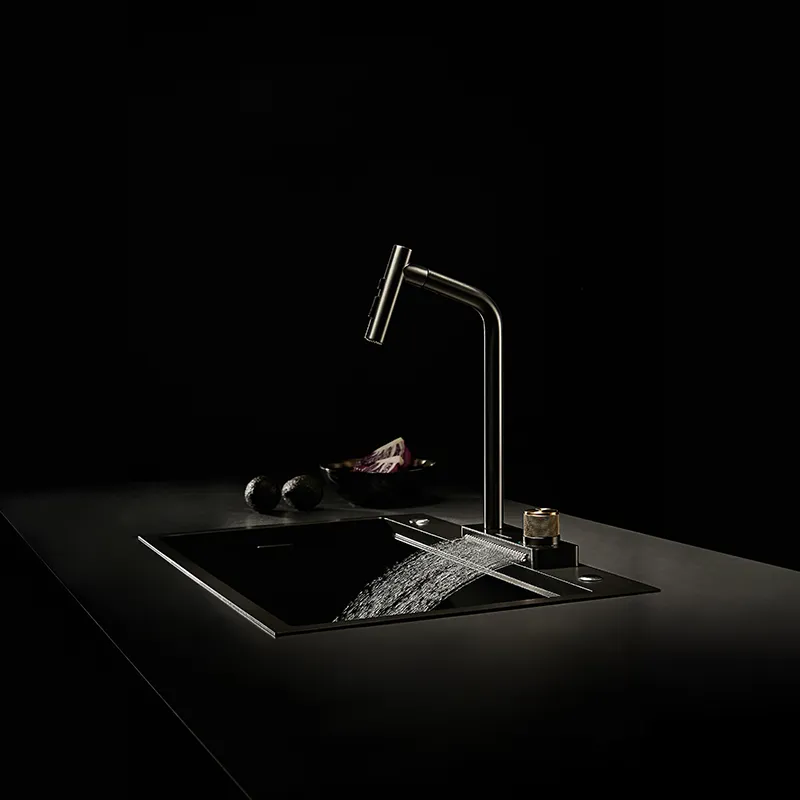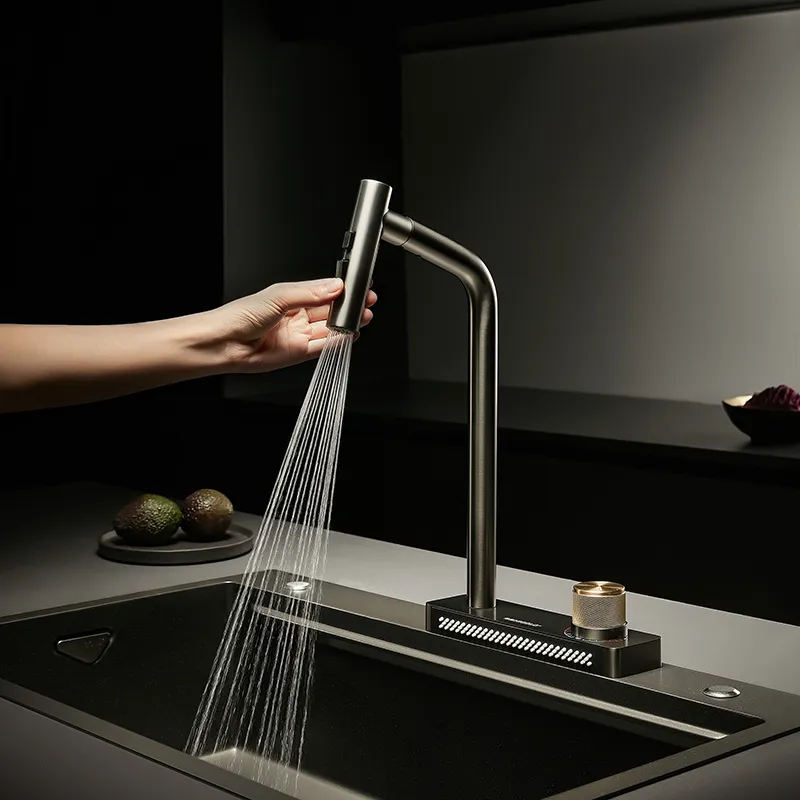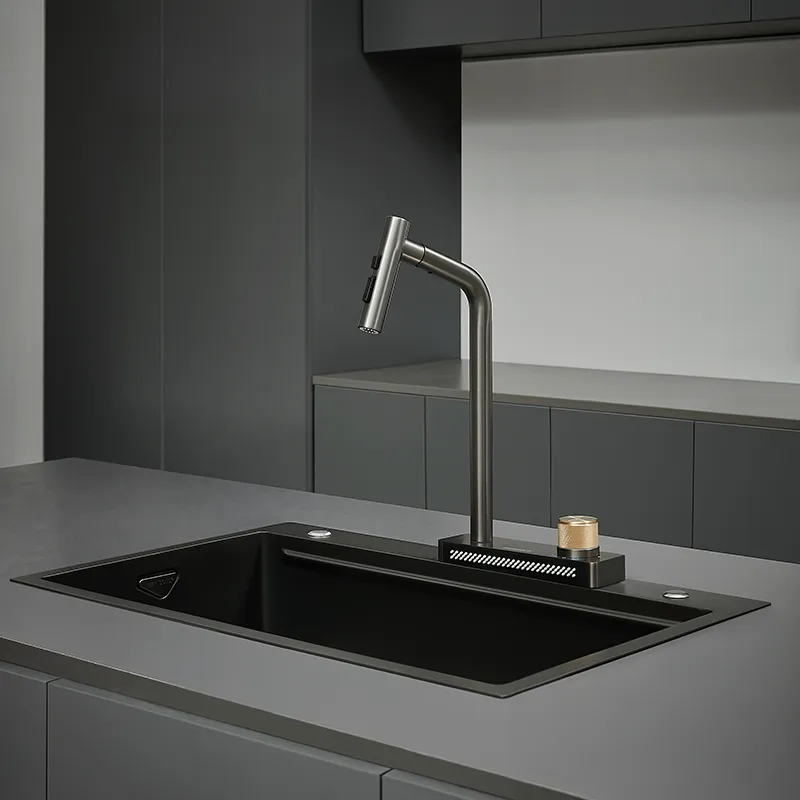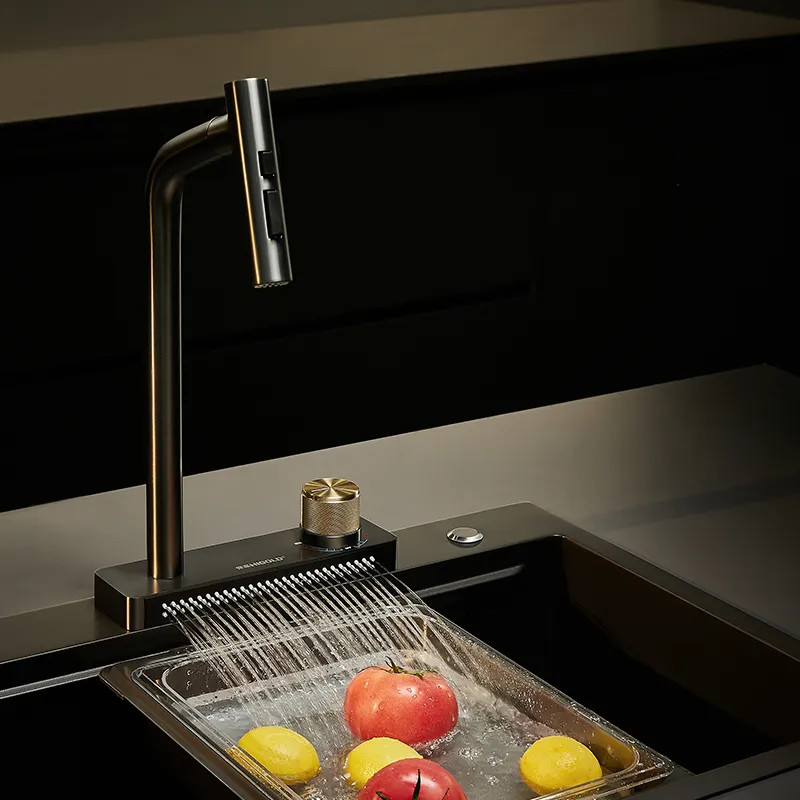When using the kitchen sink faucet, have you ever encountered the problem of water seepage at the faucet connection? Have you ever noticed the leakage and water quality problems of the faucet? These problems are closely related to the sealing of the kitchen faucet, so many people begin to pay attention to the question of "whether the kitchen sink faucet needs to be sealed".
For most families, sealing the faucet is not only a technical issue, but also involves many aspects such as kitchen hygiene, comfort of use, and water conservation.
Starting from the sealing problem of the kitchen sink faucet, this article will discuss in detail the importance of sealing the faucet, the sealing method, and how to properly seal the faucet, so as to help consumers solve the confusion in daily use.

Why does the kitchen sink faucet need to be sealed?
Whether the kitchen sink faucet needs to be sealed, first of all, it is necessary to clarify the importance of faucet sealing. The sealing of the sink faucet is directly related to its working efficiency, service life and water safety. There are several reasons for sealing the faucet:
1. Prevent water leakage
Water leakage is a common problem of the kitchen sink faucet. Especially when the faucet is connected to the water pipe, the sealing ring may age or be damaged due to long-term use, resulting in leakage at the sink faucet. Leakage not only wastes water resources, but may also cause water accumulation around the sink, causing damage to the kitchen floor or cabinets.
In some cases, leakage may also cause the growth of mold in the wall or cabinet, seriously affecting the hygiene of the kitchen environment. Therefore, ensuring the sealing of the faucet is the key to preventing leakage and keeping the kitchen dry and tidy.
2. Maintaining water quality hygiene
The sealing of the kitchen sink faucet also plays a vital role in maintaining water quality. If the faucet is not sealed well, the path of the water flow is easily contaminated, especially when there is debris or dirt accumulated around the faucet, bacteria and sewage may flow back into the water pipe, affecting the water quality. A well-sealed sink faucet can effectively prevent the source of pollution from entering the water pipe, ensuring that the water is clean every time it comes out.
3. Extending the life of the faucet
The sealing of the kitchen sink faucet is closely related to the durability of the faucet itself. Long-term exposure to a humid environment or poor sealing at the connection between the faucet and the water pipe may cause the faucet to corrode or age, shortening its service life. By ensuring the sealing of the faucet, the impact of water pressure in the water pipe on the faucet can be reduced, unnecessary wear can be avoided, and the life of the faucet can be extended.
4. Save water resources
Water leakage is one of the main reasons for wasting water resources. When the kitchen sink faucet is not sealed well, it may cause continuous dripping or flowing water, which will increase the household water consumption unnecessarily. Especially today when water conservation awareness is increasing, how to prevent unnecessary water waste by reasonably sealing the faucet is a concern for many consumers.

How to determine whether the sink faucet needs to be sealed?
In order to understand whether the kitchen sink faucet needs to be sealed, you first need to determine the sealing status of the sink faucet. The following are several common judgment methods:
1. Check for water leakage
The most intuitive way to judge is to check whether the kitchen sink faucet is leaking. The manifestation of water leakage may be water seepage from the faucet interface, valve or outlet. Especially when the faucet is closed, there is still water dripping out, indicating that there is a problem with the sealing. You can check the joints of the sink faucet to see if there are any water stains or signs of moisture. If you find water seepage at the faucet joint, you may need to reseal it.
2. Check the joints of the faucet
The joints between the sink faucet and the water pipe are the most prone to leaks. Check whether the connection between the faucet and the water pipe is tight and check whether the seal is intact. If the seal is worn, aged or missing, it needs to be replaced and sealed in time. Especially when installing the faucet, it is crucial to ensure the sealing of the joint.
3. Check whether there is a problem with the faucet valve
If you find that the kitchen sink faucet leaks when it is turned on and off, there may be a problem with the sealing of the faucet valve. Poor sealing at the valve may prevent the water flow from stopping completely, resulting in water dripping and leaking. If this is the case, it is usually necessary to replace the valve seal or adjust the internal structure of the valve.
4. Water dripping when using a hose
If you use a kitchen sink faucet to deliver water outward through a hose, check if there is any water dripping leakage at the water pipe joint. If the connection between the water pipe and the faucet is not completely sealed, it will also cause water leakage and even affect the normal output of water flow.

How to seal a kitchen sink faucet?
Sealing a sink faucet is a simple but very important process. Here are some common sealing methods:
1. Replace the seal ring
The seal ring is the core component of the sink faucet seal. When the seal ring is aged, deformed or worn, the faucet will leak. The solution to this problem is to check and replace the seal ring regularly. In most sink faucets, the seal ring can be easily removed and replaced. You only need to disassemble the joint part of the faucet, remove the old seal ring, and replace it with a new one.
2. Use sealing tape
When installing a kitchen sink faucet, using an appropriate amount of sealing tape can enhance the sealing of the connection between the faucet and the water pipe. Tape is an economical, practical and easy-to-use method that can effectively prevent water leakage from the water pipe interface. For severely aged water pipe joints, using sealing tape can temporarily solve the problem of water leakage, but it needs to be checked regularly to ensure its effectiveness.
3. Check the tightness of the joints regularly
If the joints of the kitchen sink faucet are too loose, it may cause poor sealing and leakage. It is necessary to check whether the joints between the faucet and the water pipe are tight regularly. You only need to use tools to tighten the joints appropriately to avoid looseness and leakage.
4. Use silicone sealant
For some more complex sealing problems, using silicone sealant is a more professional way to deal with it. Silicone sealant can provide strong waterproof ability and is suitable for sealing the joints between the sink faucet and the water pipe. Silicone sealant can not only prevent water leakage, but also effectively reduce the erosion of the external environment on the faucet and enhance the durability of the faucet.
5. Choose the right faucet
Choosing a sink faucet with good quality and reasonable design is also an effective way to avoid sealing problems. Some brands of faucets are designed with sealing in mind, and use multiple sealing structures to effectively reduce the risk of leakage. When buying faucets, you should choose brands that use high-quality materials and have optimized designs.

What are the precautions for sealing sink faucets?
When sealing kitchen sink faucet, you also need to pay attention to the following points:
1. Choose suitable sealing materials
Different sink faucets and water pipe connection methods may require different types of sealing materials. When choosing sealing materials, you should choose according to the actual situation. Common sealing materials include rubber sealing rings, PTFE sealing tapes, silicone sealants, etc., and the scope of application and effect of each material are different.
2. Regular inspection and replacement
Sealing is not a one-time thing. Over time, the sealing material may age due to factors such as water flow and temperature changes, so it is necessary to regularly check the sealing condition of the kitchen sink faucet. If you find that there is a problem with the sealing material, replace or repair it in time to ensure the normal use of the faucet.
3. Professional installation and repair
If you are unable to handle the sealing problem of the sink faucet yourself, or the faucet has a serious leakage problem, it is recommended to find a professional plumber to install or repair it. Professional maintenance personnel can find the problem in time, take correct measures to deal with it, and ensure the sealing of the faucet and the safety of the water pipe.
Can I buy customized stainless steel kitchen sinks from Higold at wholesale prices?
Yes, Higold offers both ODM and OEM services for customized stainless steel sinks and kitchen faucets. With over 500 patents and a strong R&D team, the company launches more than 20 new SUS304 sink models every year. Higold's factory supports large-scale customized orders, ensuring bulk buyers and wholesalers receive quality sinks tailored to their specific market demands. Higold is an ideal China-based kitchen sink supplier for businesses looking for innovation, high quality, and low price customization.


